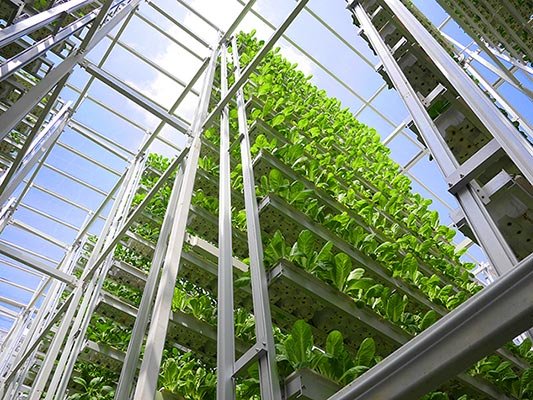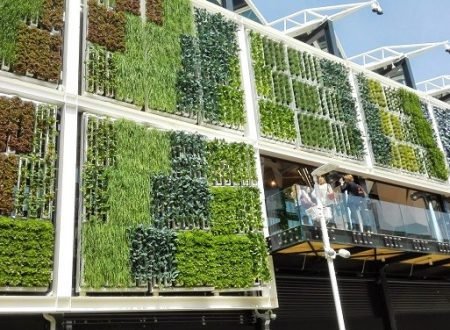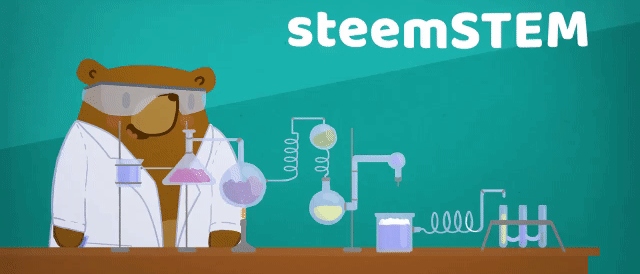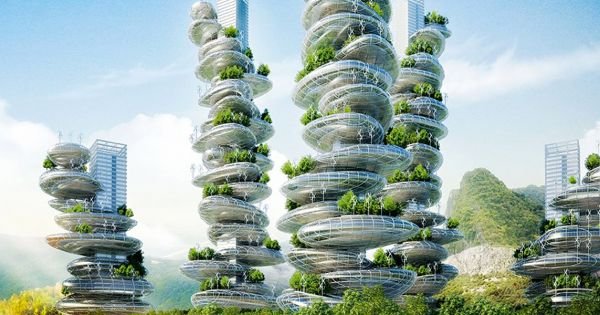Agro Towers: Vertical Farming for sustainable crop production
As the world's population increases, feeding this ever growing population becomes a huge challenge. Due to increase in urbanization we are loosing Arable lands everyday, and this could lead to food shortages. With the imminent problems there is a need to look for alternative solutions to the problem of loosing arable lands.
Because farming is not done in a controlled environment factors like pests, natural disasters, unpredictable weather conditions, one way or the other reduce product yield. When there is a grass-cutter pest infestation in a farm for instance, the farmer faces the risk of loosing his entire harvest for that year.
Continuous farming is also a major problem that affects crop yield, and this because it reduces the nutrients in the soil, thereby making the soil infertile over time. One solution to this problem is to leave the land fallow over a certain period of time, but with the increase in population and demand for food, leaving land to lie fallow is not an option.
I believe that substantial investment in the development of Agro-towers which utilizes vertical farming will go a long way in solving these challenges
What is Vertical Farming
 [image depicting crops planted vertically]
[image depicting crops planted vertically]
With the use of Controlled Environmental Agriculture technology, natural factors like light, temperature, gases and humidity can be created artificially in a controlled manner so that processes like photosynthesis can take place in a controlled environment.
This method allows you to grow more crops on a smaller land area and this usually means going upwards into buildings.
How vertical farming works

There are 2 main models of vertical farming to choose from: one is Hydroponics, and Aeroponics . In hydroponics, the plants are grown in a nutrient-rich basin of water, while in Aeroponics the plant roots are sprayed with a mist containing water and nutrients. This ensures that plants have a steady supply of water and nutrients needed for their survival.
There is also a 3rd option known as Aquaponics which involves breeding fish that helps to cultivate bacteria for plant nutrients.
In vertical farming, plants are cultivated in stacked layers, which form a tower like structure. Lighting can be provided by a combination of both natural and artificial lights. In place of a soil vertical farms use, Hydroponic, Aeroponic, and Aquaponic growing mediums. In order to offset energy costs verticals farms uses energy sustainability features.
Economic Benefits
There are so many economic benefits that can be derived from vertical farming , and some of them includes:
1. Increased crop Production
Unlike traditional farming methods which produce crops during season, vertical farming methods can produce food all year round.
2. Conservation Of resources
Vertical farming reduces the need for more farmland, thus saving natural resources, and unused farmland can recover while lying fallow. The nutrients lost due to continuous farming can be regained during rest period.
3. Poverty reduction
Having more farms which produce crops will increase food security. When there is enough food for the masses poverty will reduce and people will become more productive.
4. Increase in the overall health of people
Having more farms in urban centers will lead to increase in levels of oxygen, since plants produce oxygen as end product of photosynthesis. This could also mean cleaner air in cities, which could lead to increase in the overall health of people
5. Energy sustainability
Organic waste generated from the farm can be converted into biogas by methane digesters. The biogas gas which is composed of 65% methane and other gases can be burned to generate electricity for the greenhouse.
In Conclusion
The most important driving force for the success of this farming practice is technology. Technology is needed too create the controlled environment needed for plant survival. For this to be readily available then materials needed have to be affordable.
Vertical farming yields more crops than traditional farming methods. Vertical farming requires a lot less water to grow crops, and crops can be grown all year round. By planting indoors plants can grow in a controlled environment, where they are not subjected to harsh weather conditions.
We are in a time where technology is been looked up to as the answer for everything, so why can't it be the same for Agriculture.
For Further Reading
https://en.wikipedia.org/wiki/Vertical_farming
http://www.bbc.com/future/story/20170405-how-vertical-farming-reinvents-agriculture
https://www.forbes.com/sites/ronaldholden/2017/11/04/its-
https://www.thebalance.com/what-you-should-know-about-vertical-farming-4144786
https://www.theguardian.com/science/2014/feb/06/vertical-farming-explained-erik-murchie
http://verticalfarm.altervista.org/
https://greengroundsatuva.wordpress.com/2015/03/21/vertical-farms/
http://www.plantphysiol.org/content/68/6/1380.short
Image credit
Image 1
Image 2
Image 3
Thanks for reading this article, if you enjoyed it, you head over to the SteemSTEM community for more articles and discussion on science.
Please support me by upvoting, commenting and resteeming my posts


It is good to see that more and more people care about sustainability in the long run. Thank you for this post , Leczy!
Thanks for reading my post
You are welcome. I'll be happy to see more content like this!